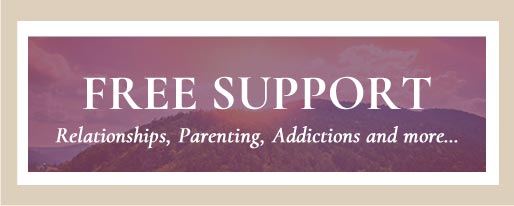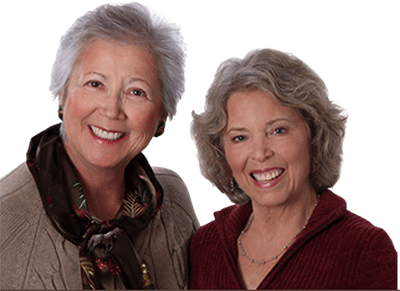The Secret to a Peaceful Life (or The Fear of Death)
By Sheryl PaulOctober 01, 2012
Do you know that addressing your fear of loss, change, and death is one of the keys to living a peaceful life?
 We all long for a peaceful life. We search for peace through the mediums that our culture sells: through spending, watching television, searching the Internet, finding the “perfect” partner, having a baby, and a variety of other misguided methods. We even meditate, practice yoga, and attend retreats in an attempt to find peace. But none of these activities work if we’re using these tools as a way to escape or transcend the pain and messiness of life. Unless we’re willing to feel our pain and other uncomfortable feelings, the peace that we chase will perennially elude us.
We all long for a peaceful life. We search for peace through the mediums that our culture sells: through spending, watching television, searching the Internet, finding the “perfect” partner, having a baby, and a variety of other misguided methods. We even meditate, practice yoga, and attend retreats in an attempt to find peace. But none of these activities work if we’re using these tools as a way to escape or transcend the pain and messiness of life. Unless we’re willing to feel our pain and other uncomfortable feelings, the peace that we chase will perennially elude us.
Yet most people resist the pain. It seems that we’re almost hard-wired to resist or push away pain, and our cultural resistance to pain certainty doesn’t help us learn ways to soften our hearts and risk vulnerability. We resist feeling loss. We resist feeling fear. We resist feeling disappointment and frustration. We resist feeling out of control. We resist accepting uncertainty and the unknown. And deeply embedded into the resistance to feeling pain is our fear of death.
The fear of death is often one of the root causes of anxiety. In speaking with my clients over the years and intimately delving into my own journey with anxiety and panic, I have no doubt that when we can soften into our fear of loss, which is woven around our fear of death, the anxiety dissipates. The more we lean into the fear and touch directly into the center of the loss, the less anxiety takes hold until, eventually, it plays a cameo role on the stage of psyche instead of stealing the show in the center of the stage.
There are primarily two components to the fear of death. The first is the fear of death itself, the actual end to life in this body. Nearly everyone I know, from my clients to my friends to my son, has a fear of death. To some degree, this fear is healthy and normal; why wouldn’t we fear something that is completely unknown and out of our hands? Death is the final transition and, like all transitions, a degree of fear when contemplating leaping into the unknown is healthy. For my highly sensitive clients, the fear of death appeared early in life, often by the age of five. My clients talk about crying themselves to sleep at night as children because they were afraid they or their parents would die. Sogyal Rinpoche, in The Tibetan Book of Living and Dying, describes his fear of death that arose at age seven on the heels of watching two beloved members of his community die:
“While everyone else slept soundly, I lay awake and cried the whole night long. I understood that night that death is real, and that I too would have to die. As I lay there, thinking about death and my own death, through all my sadness a profound sense of acceptance began slowly to emerge, and with it a resolve to dedicate my life to spiritual practice.” (p. 7)
The second – and interrelated – component of the fear of death is how this fear manifests in everyday life, which is often through anxiety, resisting loss, and pushing back against the passage of time. Interestingly, the more we develop a relationship to the second fear, the more the first fear abates. It’s like we’re given thousands of ways to practice conscious dying throughout our lifetime – each transition, each ending, each loss of a loved one, each sunset, each season’s end, each time we shed a layer of ourselves that is no longer serving us – and when we approach these transitions consciously, we build the muscle that will allow us to die consciously. Said succinctly, the less we fear loss and allow ourselves to appropriately grieve in response to loss – whether through a mindful breath, a dance, or a wave of tears – the less we fear death. As Sogyal Rinpoche writes:
“According to the wisdom of the Buddha, we can actually use our lives to prepare for death. We do not have to wait for the painful death of someone close to us or the shock of terminal illness to force us into looking at our lives. Nor are we condemned to go out empty-handed at death to meet the unknown. We can begin, here and now, to find meaning in our lives. We can make every moment an opportunity to change and to prepare – wholeheartedly, precisely, and with peace of mind – for death and eternity.” (p. 11)
The awareness of death is particularly apparent during times of transition when our familiar structures and mindsets are often ripped away and we’re left sitting in the groundlessness that defines the liminal realm. But in order to grow and learn from these potent times, we must be willing to feel our pain. We must be willing to learn how to move towards acceptance of uncertainty and feeling out of control. Again, our cultural resistance to feeling pain or any uncomfortable emotion has led to a rampant cultural fear of loss. We provide our children and young people with virtually no way to contain or relate to the inevitable sadness that accompanies life on Earth. When we lose a beloved pet, we die. When we move, we die. When we start a new year in school, we die. We are also reborn again and again, as evidenced by the cycles of nature, but in order to expand into the fullness of each rebirth, the death must be conscious and complete. A few weeks ago I quoted Pema Chodron (one of my all-time favorite quotes) as saying:
“All anxiety, all dissatisfaction, all the reason for hoping our experience could be different are rooted in our fear of death. Fear of death is always in the background… Trungpa Rinpoche once gave a public lecture titled ‘Death in Everyday Life.’ We are raised in a culture that fears death and hides it from us. Nevertheless, we experience it all the time. We experience it in the form of disappointment, in the form of things not working out. We experience it in the form of things always being in a process of change. When the day ends, when the second ends, when we breathe out, that’s death in everyday life…”
I’ve written about my own descent into the hell-realm of anxiety via my first panic attack at age twenty-one. But I’ve talked less about how the following seven years were characterized by a pervasive fear of death. When I could hear my heart beating through the springs of the mattress at night, I was sure I would die of a heart attack in my sleep. When my throat would close nearly every time I tried to eat, I thought I was going to die of choking. When I was driving across the Bay Bridge, I was terrified that the bridge would collapse and I would plummet into the water. Fear and anxiety were my constant companions, joined daily by terror. It was a seven year stint in hell that I wouldn’t wish upon anyone.
And yet… it was also my hero’s journey: the descent into the dark night of the underworld that would ultimately result in shedding several layers of fear, touching into my true self, and connecting to my life’s work. Had I not endured those seven years I would not be sitting here tonight, writing this post and possibly helping someone, somewhere in the world, make sense of their hell-realm.
Today, for the most part, I no longer live with a fear death. I embrace death in everyday life as it manifests as the loss of a day or season or year, and increasingly have a sense that there’s nothing to fear when we die. Just the other day, I had a vision of my life as an old woman and I had a deep, knowing sense that it would all be okay, that when it came time to die that it would feel right. I’m not sure I can explain it, but I knew in that moment that, if I continue to do my work of approaching transitions with consciousness, I will walk toward my death prepared to enter that final doorway and embrace the unknown. Like all new endeavors, when we do the work on the front side of the transition – during the engagement, pregnancy, before leaving the old city or job – we can walk through the threshold and discover the gems of rebirth on the other side. If it’s true for every other transition, I trust that it will be true for death as well.
And that’s why I’m so passionate about this work. It’s not just about getting through engagement anxiety or postpartum depression or pushing past the intrusive thoughts; it’s about approaching life through the mindset that we’re here to learn and grow, and that each challenge, whether a transition or an otherwise potent time in life, provides an opportunity to see ourselves with greater clarity and practice the art of letting go of control and certainty again and again and again.
 Send this article to a friend
Send this article to a friend  Print this article
Print this article  Bookmarked 2 time(s)
Bookmarked 2 time(s)
| Related Articles |
|---|
| Compassion Heals our Fearful Self |
| Transforming Fear into Faith |
| Managing Fear With Spirit |
| Fear of Death |
Comments
| Author | Comment | Date |
|---|---|---|
| Join the Inner Bonding Community to add your comment to articles and see the comments of others... | ||

Daily Inspiration
Embrace with compassion your wounded feelings of anxiety, fear, depression, anger, jealousy, guilt, shame, aloneness, rage, blame. Hold the wounded child and explore what you are thinking or doing that is causing these feelings. What are you telling yourself? All thoughts that create suffering are lies to ourselves. Discover the thoughts that are creating your suffering. Pain is a part of life, but suffering is a choice that results from our untrue thoughts.
By Dr. Margaret Paul

 Share with Del.icio.us
Share with Del.icio.us Share with Digg
Share with Digg







